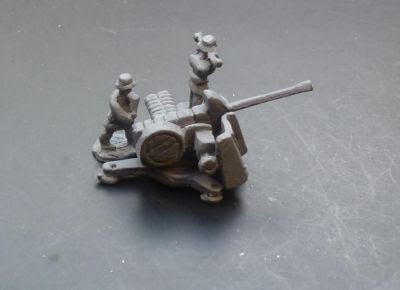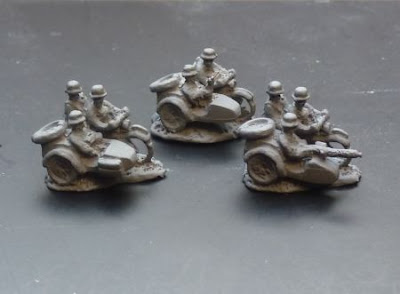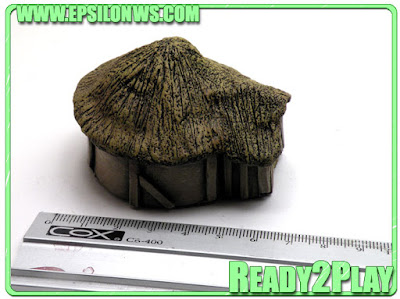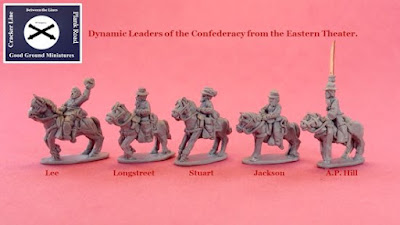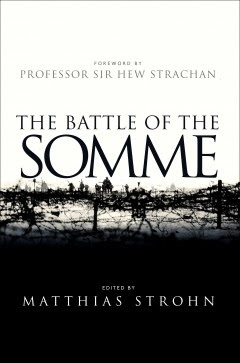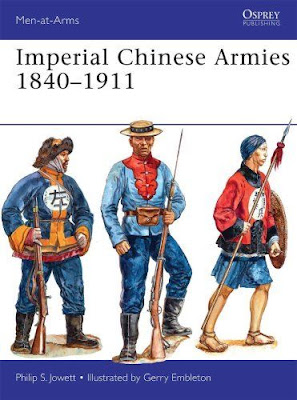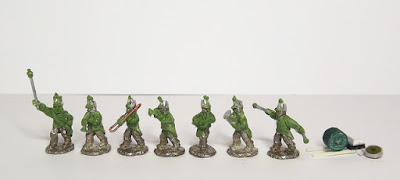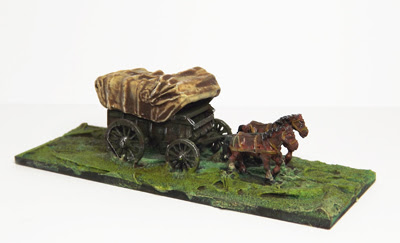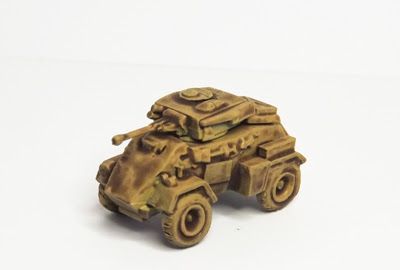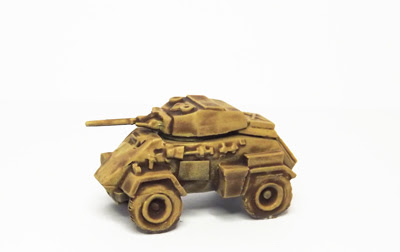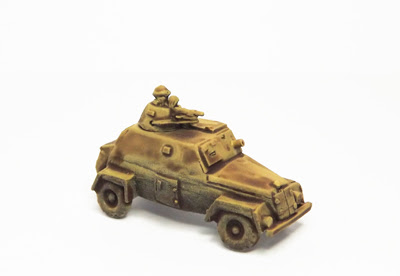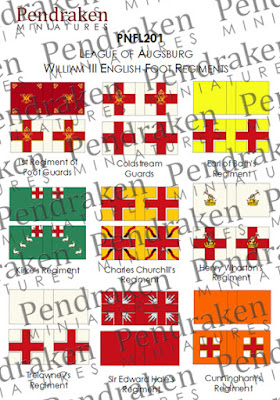Osprey Publishing books available now April 2016.
The Battle of the Somme
Published to coincide with the centenary commemoration of the battle of the Somme, this new study comprises 12 separate articles written by some of the foremost military historians, each of whom looks at a specific aspect of the battle. Focusing on key aspects of the British, French and German forces, overall strategic and tactical impacts of the battle and with an introduction by renowned World War I scholar Professor Sir Hew Strachan, The Battle of the Somme is a timely collection of the latest research and analysis of the battle.
The terrors of the Somme have largely come to embody trench warfare on the Western Front in the modern imagination, but this new book looks beyond the horrendous conditions and staggering casualty rates to provide new, insightful research on one of the most pivotal battles of the war.
Contents
Foreword by Professor Sir Hew Strachan
The Context of the Somme
Attrition or Annihilation?
French Strategy in 1916 and the Battle of the Somme
Air War over the Somme
The British Army's Operations on the Somme
Trial and Error: the Dominion forces
French Generalship on the Somme
The Road to Modern Combined Arms Warfare
British Tactical Practice During the Somme Campaign
The German Army at War
The Evolution of French Tactics 1914-16
The Long Shadows of the Somme
J2M Raiden and N1K1/2 Shiden/Shiden-Kai Aces

Although seen as a replacement for the A6M Zero-sen carrier-based fighter, the Mitsubishi J2M Raiden was actually designed as a land-based naval interceptor optimised for speed rather than manoeuvrability. Engine cooling problems for its Mitsubishi Kasai 23 engine, airflow and flight control issues plagued the Raiden's development, but despite these production delays, aces Sadaaki Akamatsu Yoshihiro Aoki, Susumu Ito and Susumu Ishihara all claimed significant scores in the Raiden. Kawanishi's N1K family of fighters were privately developed by the manufacturer from the N1K Kyofu floatplane fighter. Again plagued by structural and engine maladies, the N1K1-J Shiden eventually entered frontline service in time to see considerable action in the doomed defence of the Philippines in October 1944. Despite suffering heavy losses, the units equipped with new fighter proved that the N1K could more than hold its own against P-38s and F6Fs. The improved N1K2-J Shiden-KAI started to reach the frontline by late 1944 - in time for defence of the Home Islands. Here, it proved to be the best IJN fighter of the war.
Contents
Need for a New Fighter
Raiden Development
The Front
From China to Kyushu
Tokyo Express
Fights Against Fighters
Fight till the End
Appendices
Camden 1780
As the American Revolution continued, the British refocused their fight on the southern colonies in the hopes of triggering an outbreak of loyalism that would sweep the rebels aside. Under Sir Henry Clinton they captured Savannah at the end of 1778, and Charleston in May 1780, with Lord Cornwallis being left in command with just 8,500 men under him. Too thinly spread to guard the 15,000 square miles he was responsible for, Cornwallis went on the offensive, invading North Carolina and using Camden as a launch pad. This new history reveals how Cornwallis was able to use his aggressive strategy to great effect and how the overconfidence of the re-formed American forces under Horatio Gates was to result in a shocking defeat on the night of 15 August 1780 - a defeat that would allow Cornwallis to push deep into North Carolina the following year, where he would only be stopped by the American victory at Yorktown.
Contents
Introduction
Chronology
Opposing commanders
Opposing armies
Opposing plans
The campaign
Aftermath
The battlefield today
Further reading
Index
F-15C Eagle versus MiG-23/25
Designed following the relatively poor performance of America's multi-role fighters during the Vietnam War, the F-15 Eagle was conceived as a dedicated air superiority fighter. But, having trained for 15 years in the Eagle it wasn't Eastern Bloc operated MiGs that the F-15 eventually came up against, but pilots of Saddam Hussein's Iraqi airforce.
This book analyses the combat between the American and Soviet 'Cold War fighters' in a balanced manner, examining how the technical abilities of the aircraft combined with the different levels of training available to opposing pilots and groundcrews allowed the F-15s to destroy the Iraqi offensive abilities within weeks of the First Gulf War starting. Packed with artwork, illustrations and photographs, this book places the reader in the cockpit during one of the last major dogfighting air wars in modern history.
Contents
Introduction
Chronology
Design and Development
Technical Specifications
The Strategic Situation
The Combatants
Combat
Statistics and Analysis
Aftermath
Further Reading
Index
Imperial Chinese Armies 1840–1911
An in-depth analysis of the Chinese Armies that fought a series of increasingly fractious wars over nearly a century. Beginning with a run through of the Chinese forces that combated the British and French during the two Opium Wars, this history goes on to trace the forces who were drawn into internal wars and rebellions in the 1850s and 60s, the open warfare in North Vietnam, the string of defeats suffered during the First Sino-Japanese war and the Boxer Rebellion. Providing an unparalleled insight into the dizzying array of troop types and unique uniforms, this is a history of the sometimes-painful modernization of China's military forces during one of her most turbulent periods of history.
Contents
Introduction
Chronology
The Chinese Imperial Army of the Qing Dynasty from c.1840 - the First Opium War against Britain (1839-42), and Second Opium War
Arrow War (1856-60) against Britain and France
Muslim and provincial rebellions and clan wars, 1840-1911
The Franco-Chinese War in Vietnam and Formosa (1884-86) - the Black Flag army
The First Sino-Japanese War (1894-95)
The modernized Imperial Army, 1895-1911 - the Boxer Rebellion and international interventions (1900)
The armies of the 1911 Revolution
Weaponry
Uniforms
Plate Commentaries
Valentine Infantry Tank 1938–45
The Valentine was the most produced and most widely used British tank of the Second World War. The Valentine first saw combat during Operation Compass in November 1941 and remained one of the main medium tanks in British service into 1943. As the Churchill became more prevalent the Valentine was relegated to specialist and tank-destroyer variants, which would remain in service in the Far East to the end of the war.
This book describes the evolution of the Valentine design and weighs up its impact on the battlefield. Although widely regarded today as one of the weaker tanks to be fielded during the war, it was exceptionally numerous, with more Valentines produced than any other British tank.
Contents
Introduction
Development
Production
Operational History
Bibliography
Index
US Army Green Beret in Afghanistan 2001–02
In October 2001 the most militarily advanced nation on earth came into conflict with one of the least developed nations as American forces poured into Afghanistan. The tip of the spear was drawn from the US Special Forces community, and largely from the units of the United States Army Special Forces - the famous Green Berets. Together with the Special Activities Division of the CIA and the Afghan Northern Alliance, they overthrew the Taliban in a lightning campaign that redefined modern warfare.
This new study reveals the grueling Green Beret training and preparation, the specialized equipment they used in the field and traces their deployment throughout the campaign, from the first insertion of forces through to the fall of Kabul and Kandahar, the Taliban uprising at the notorious Fort of War in Mazar-e-Sharif, and the clearance of Tora Bora and Operation Anaconda in the Shahikot Valley.
Contents
Introduction; the Green Berets Becoming a Modern Green Beret; SFQC and Robin Sage Operation Enduring Freedom- Afghanistan Infiltration; October 2001 First Blood; November 2001 Turning the Tide; December 2001 Tora Bora and Anaconda A Squandered Opportunity? Bibliography Index
Nazi Moonbase
In the dying days of World War II, Nazi Germany spent increasingly large amounts of its dwindling manufacturing capability on the construction of a small fleet of flying saucers capable of travel beyond the atmosphere. While these saucers were too few in number to affect the eventual outcome of the war, they did allow for a small, but fanatical Nazi group to escape Germany, first to Antarctica, and then on to the moon!
For the first time, the history of the Nazi space program has been revealed - with a focus on the design, construction, and layout of the moonbase. Using detailed maps, the entire moonbase is reconstructed, noting the locations of various important features, such as weapon emplacements, the Vril generator, the air recyclers and water extractors. The book also covers the various attempt by the allies to overcome this last Nazi stronghold through both subterfuge and outright battle.
Contents
Introduction
The Nazi Space Program
The Base
Projects
The Hunt for the Moonbase
Bibliography
Horizon Wars
Beyond today's horizons lie uncountable wars still to be fought by mankind - on battlefields, against foes, and with weapons that can only be imagined. With Horizon Wars, wargamers can bring these future conflicts to the tabletop, no matter their exact vision of the future of warfare. Combining the feel of real-world combat and tactics with versatile and quick-to-learn rules, Horizon Wars is a 2-10mm company-level game that incorporates ground forces, aircraft and the titans of the battlefield - mechs. Whether you want to pit a handful of mechs against each other in quick clash of patrols, or line up combined-arms forces for a huge battle, the game remains fast-moving and enjoyable. Also included are full rules for building units from the ground up, allowing players to tailor their forces to suit the mission objectives or their figure collections.
Osprey Publishing Ltd

